The New Boys of Summer
The New Boys of Summer
Baseballs Radical Transformation in the Late Sixties
Paul Hensler
Rowman & Littlefield
Lanham Boulder New York London
For Donna
Published by Rowman & Littlefield
A wholly owned subsidiary of The Rowman & Littlefield Publishing Group, Inc.
4501 Forbes Boulevard, Suite 200, Lanham, Maryland 20706
www.rowman.com
Unit A, Whitacre Mews, 26-34 Stannary Street, London SE11 4AB
Copyright 2017 by Rowman & Littlefield
All rights reserved . No part of this book may be reproduced in any form or by any electronic or mechanical means, including information storage and retrieval systems, without written permission from the publisher, except by a reviewer who may quote passages in a review.
British Library Cataloguing in Publication Information Available
Library of Congress Cataloging-in-Publication Data
Names: Hensler, Paul, 1956 author.
Title: The new boys of summer : baseballs radical transformation in the late sixties / Paul Hensler.
Description: Lanham : Rowman & Littlefield, [2017] | Includes bibliographical references and index.
Identifiers: LCCN 2017009588 (print) | LCCN 2017029964 (ebook) | ISBN 9781538102602 (electronic) | ISBN 9781538102596 (hardback : alk. paper)
Subjects: LCSH: BaseballUnited StatesHistory20th century.
Classification: LCC GV863.A1 (ebook) | LCC GV863.A1 H469 2017 (print) | DDC 796.35709046dc23
LC record available at https://lccn.loc.gov/2017009588
 The paper used in this publication meets the minimum requirements of American National Standard for Information SciencesPermanence of Paper for Printed Library Materials, ANSI/NISO Z39.48-1992.
The paper used in this publication meets the minimum requirements of American National Standard for Information SciencesPermanence of Paper for Printed Library Materials, ANSI/NISO Z39.48-1992.
Printed in the United States of America
Preface
The decade of the 2010s has been marked by commemorations of many memorable eventsgood and badthat occurred fifty years prior. From the formation of what would become classic rock n roll groups to the tumultuous and tragic incidents of assassination and war, the 1960s were among the most compelling years in our nations history; a period during which the innocence of Americana and American life was torn away to expose a country that at times was in abject upheaval. It has been argued that the beginning of the sixties was simply an extension of the 1950s and that the real 1960s did not commence until halfway through that decade. The obvious demarcation implied is that the sixties figuratively began when US Marines landed en masse in South Vietnam in March of 1965 to wage yet another battle in the continuing Cold War.
On the American home front, society was undergoing a series of dynamic changes that also took root during the fifties. The clamor for civil rights continued to intensify, and culture in the United States experienced shiftsseismic at timesas consumerism blossomed from coast to coast. Caught up in this sea change, for better or worse, was Major League Baseball, which was forced not only to meet the demands of fans nationwide but also to keep up with the times and face direct challenges posed to its status as the national pastime. Baseball faced stiff competition from other professional sports, especially football, and could no longer afford to be complacent in assuming that a nearly century-long tradition of action on the diamond was always going to be foremost in the mind of the American fan. The manner in which baseball addressed those challenges would determine the degree to which it would succeed or fail in the coming years. Indeed, as the end of the 1960s drew near and with the search for a new commissioner to replace the dethroned William Eckert underway, the Sporting News opined that the major leagues had to develop a new master plan for the games survival.
Keeping in mind the plight of baseball and the zeitgeist of the late 1960s, I have chosen to examine key issues confronting the game, with special attention paid to those occurring in the time frame of two vital years: 1968 and 1969. At a 2008 historical symposium, The Legacy of 1968, I presented a paper that gave an overview of baseball during that turbulent year. Within the pages of this book, however, I probe more deeply the aspects that held currency in the transformation of the game at the dawn of the 1970s.
The brief opening chapter touches on three events that occurred late in the 1968 baseball season and place the era in an appropriate context with regard to the state of the game. Thereafter, each chapter is devoted to an individual topic that will help the reader gain a better understanding of the forces that shaped baseball as the calendar changed from 1968 to 1969 and why they were so significant. Despite this self-imposed two-year limit, I believe that the delineation of these subjects offers valuable insight to the games status, and taken collectively they demonstrate that in 1968 baseball ended its mid-twentieth-century stodginess and in 1969 began to more than hold its own against the trials imposed upon it by other sports and remain at the forefront of Americas sporting culture.
This success came at a price and would be attained with difficulty, yet baseball brought itself into a new modern era and solidified its foundation for future gains in the ensuing decades. That said, however, there are instances in which a broader time frame becomes more informative. Particularly for the topics of labor, stadium construction, and information technology, stepping back to the earlier part of the 1960s provides a better context rather than trying to start the narrativeas well as the clock, so to speaknearer to the end of the decade.
But 1968 and 1969 provided their own share of feats and deeds that have secured their places in history. To explain the shifts taking place in baseball during these two formative years, this book will cover a host of subjects. Following the introductory chapter, major factors significantly impacting the national pastime are presented, beginning with the expansion of both the American and National leagues for the 1969 season, which restored major-league baseball to Kansas City and introduced it to venues on the Pacific Coast as well as in Canada. A chapter outlining the general conditions for expansion is followed by separate chapters detailing the manner in which each league executed its plan to add new teams.
After the ousting of the maligned William Eckert as baseball commissioner in late 1968, Bowie Kuhn was soon named as his replacement, and the installation of Kuhn became pivotal in rescuing baseball from its torpor. On the labor front, strife between players and owners dated back to the earliest days of baseballs founding. Marvin Millers naming as the director of the Major League Baseball Players Association was instrumental to the cause of those he was hired to serve and set the stage for future battles with the ranks of ownership. Meantime, the culture of baseball was affected by events at home and abroad. Domestic racial issues, the war in Vietnam, assassinations of prominent public figures, youthful rebellion, drug use, and the growing medium of television each placed their imprint on the game just as the national pastime was about to celebrate its centennial.
Baseball also bade farewell to some longtime members of its fraternity following the 1968 season, as a new crop of star players and managers stepped onto the big stage. Expansion spawned not only new teams but also new divisions, creating hope for clubs thirsting to escape the second division and contend for a postseason playoff berth. The new divisional alignment in both leagues was accompanied by major changes in rules governing key aspects of the game that were implemented in 1969. Baseball desperately sought to revitalize offensive output as an antidote to the dearth of run production in 1968, which became known as The Year of the Pitcher.
Next page
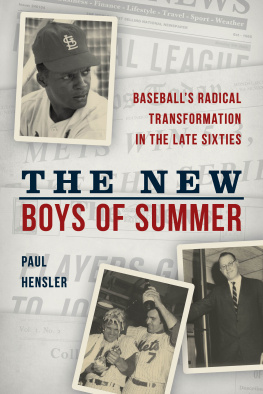


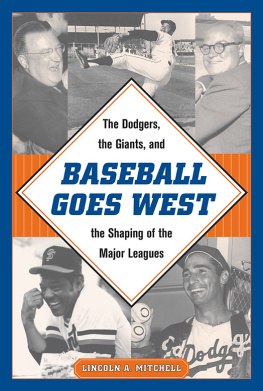
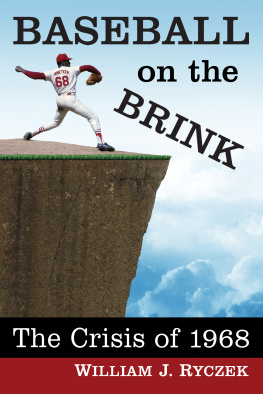
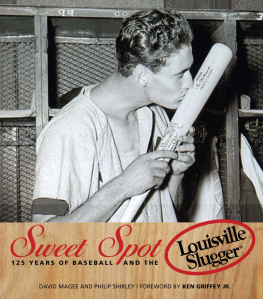
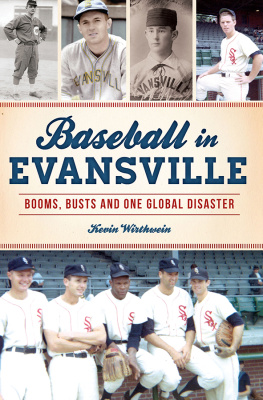
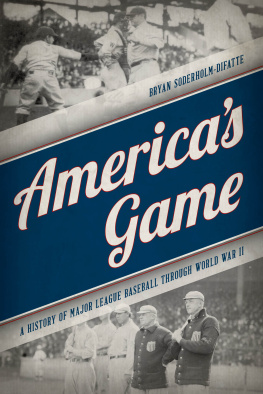

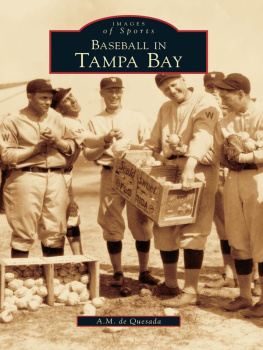
 The paper used in this publication meets the minimum requirements of American National Standard for Information SciencesPermanence of Paper for Printed Library Materials, ANSI/NISO Z39.48-1992.
The paper used in this publication meets the minimum requirements of American National Standard for Information SciencesPermanence of Paper for Printed Library Materials, ANSI/NISO Z39.48-1992.